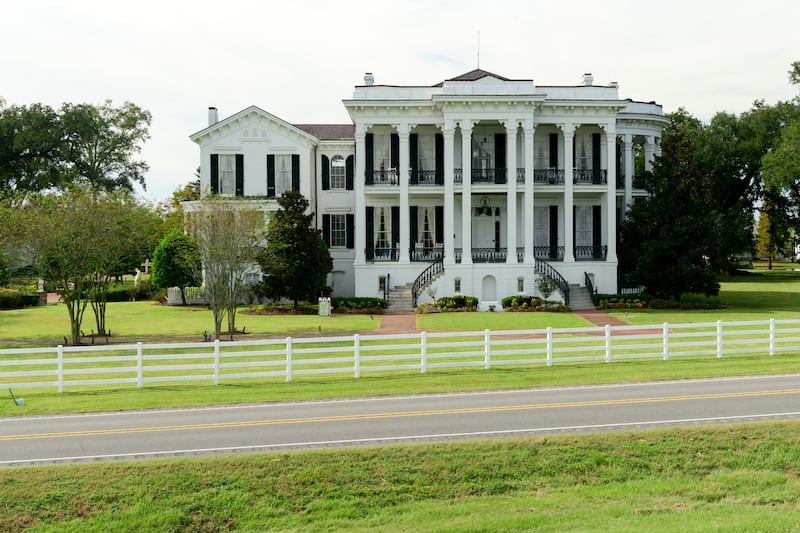The South’s biggest surviving antebellum mansion was reduced to rubble by a massive fire which was still under investigation Friday.
The Nottaway Plantation in White Castle, Louisiana, started burning around 2am on Thursday morning and was completely destroyed within hours despite the efforts of 40 firefighters. At 53,000 square feet it had been almost as big as the historic core of the White House and was used as an events venue.
But the destruction of a mansion built in 1859 by a man who enslaved hundreds and made himself one of the richest men in the pre-Civil War south also sparked a heated debate online.
ADVERTISEMENT
The house was completed in 1859 for John Hampden Randolph, a Virginia-born man who had moved to Louisiana to profit from sugar grown by enslaved people.
The business proved to be lucrative, and in 1855 he purchased over 1,000 acres of land on the Mississippi River to build “Nottoway,” named for the Virginia county where he was born.
The manor was built by 150 enslaved people, who baked each brick by hand and slept in slave quarters on the property and completed in 1859. They build a ballroom with 15-foot mirrors—and lived in squalor themselves.
When the Civil War began, Hampden chose to financially back the Confederacy. All three of his sons fought for the Confederate Army, with his oldest son dying at Vicksburg in 1863. As Confederate defeat loomed, Hampden forced his slaves to move to Texas to avoid emancipation and keep making him money. When he returned after the Confederate surrender, 53 of them remained as low-paid laborers.

After passing through a series of owners, the house and a surrounding 1,000 acres of the original larger plantation had become a resort and events venue and in 1980 it was put on the National Register of Historic Places.
But the fire divided opinion—inevitably given its tarnished past.
The president of Iberville Parish, where the home was located, posted a statement on the Facebook page saying the home was a “a symbol of both the grandeur and the deep complexities of our region’s past.”
“While its early history is undeniably tied to a time of great injustice, over the last several decades it evolved into a place of reflection, education, and dialogue,” said Chris Daigle.
Louisiana Lieutenant Governor Billy Nungesser, a Republican, called the fire a “gut punch.”
“Today my beloved Nottoway burned,” said Nicholas Schabert, who got engaged on the property and posted a tribute to the home on Facebook. “To say I’m upset is an understatement.”
Others argued that Nottoway left a dark stain on the history of Louisiana.
“Let’s be real—Nottoway wasn’t just some ‘pretty old building,’“ said Kenny Pahina. ”It was a plantation built off the backs of over 150 enslaved Black people who were owned, whipped, starved, raped, and worked to death so one family could live in luxury.”
Pahina, who originally posted that he had “no sympathy” for the property, said he “refused to mourn a moment to human suffering.”
“This wasn’t a fairy tale. The sugar industry was one of the most violent and deadly—people lost limbs, collapsed in the fields from exhaustion, or died slowly from infections while being treated like livestock," he added.
“Misery sank into those walls and floors,” agreed Erik Harry. “This is the way it gets cleansed.”
There are 375 other plantation sites, both publicly and privately owned, that are open to the public in 19 states. Some say that tourists that visit the sites for weddings, leisure, or parties turn it into “Disneyland for adults” and sugarcoat the location’s brutal past.
One critic said: “The rest of them need to burn down.”





